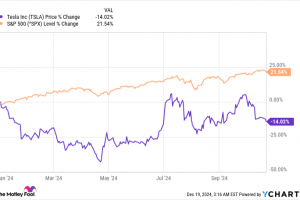
Growth 17
Inflation hammered the U.S. economy following the pandemic. Business closures led to supply chain disruptions, which evolved into an imbalance between supply and demand as the government issued trillions of dollars in stimulus payments. Simply put, too much money was chasing too few goods, something famed economist Milton Friedman once said was a recipe for inflation.
Indeed, that mismatch drove consumer prices higher at a pace not seen in decades, forcing the Federal Reserve to respond in equal measure. Policymakers raised the federal funds rate — a benchmark interest rate that influences other rates throughout the economy — at its fastest pace since the early 1980s. By increasing the cost of borrowing, policymakers hoped to curb spending and cool inflation.
Yet the aggressive nature of those rate hikes worried Wall Street — so much so that the S&P 500 (SNPINDEX: ^GSPC) slipped more than 19% last year, its worst annual decline since the Great Recession in 2008. But the index has rebounded sharply this year amid signs of economic resilience. Gross domestic product increased at a 5.2% rate in the third quarter, meaning the economy expanded more than twice as fast as the 20-year average.
Meanwhile, inflation has cooled substantially from its peak of 9.1% in June 2022, falling to 3.1% in November 2023. Policymakers seem satisfied with that progress. Recent commentary from Fed Chair Jerome Powell hints at an end to the rate-hike cycle, and such a shift in monetary policy historically bodes well for the stock market.
History says the S&P 500 could move much higher in 2024
The Federal Open Market Committee left the target federal funds rate unchanged at 5.25% to 5.5% at its December meeting. However, updated projections from policymakers point to three 25-basis-point rate cuts next year, and seven 25-basis-point rate cuts by the end of 2025.
The market expects credit conditions to loosen even faster. CME Group‘s FedWatch Tool, which measures the odds of future rates using pricing data from federal funds futures contracts, currently implies a 100% chance that…
..






